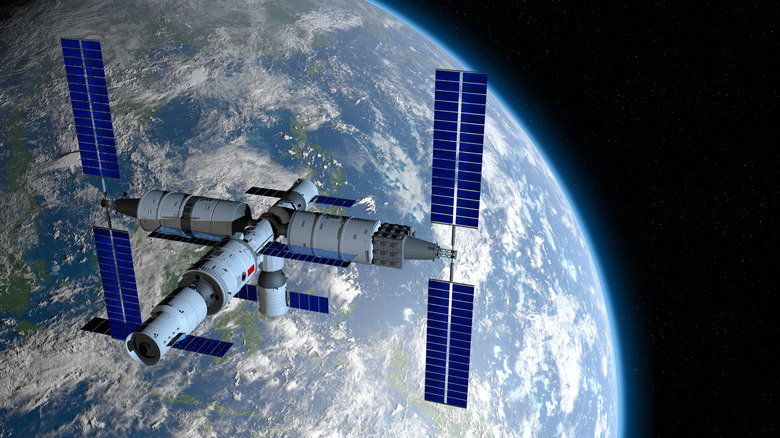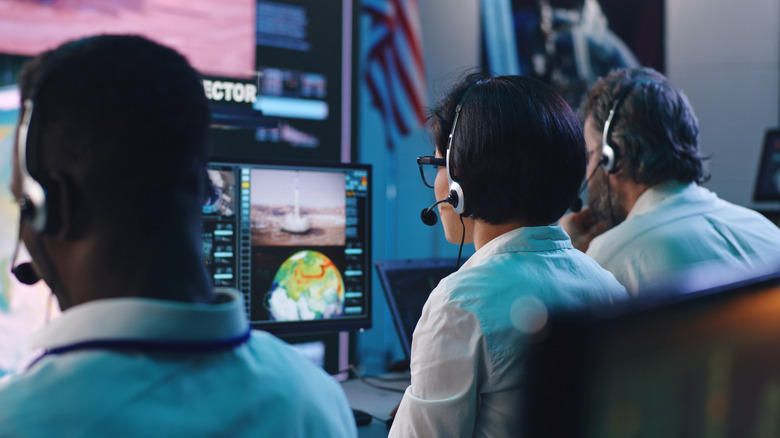Three Chinese Astronauts Were Stranded In Space - Here's What We Know
Three Chinese astronauts from the Shenzhou-20 mission are extending their reservations onboard the Tiangong space station. It's suspected that their return module was hit by some space debris, and engineers back on Earth are assessing the damage and deciding how to proceed with returning the crew safely to Earth.
The China Manned Space Agency (CMSA) confirmed that all astronauts are safe and haven't been injured. They have also stated that the incident doesn't pose an immediate threat to the Tiangong space station, but this event highlights how dangerous space is and how complex manned orbital missions are. So many things can go wrong despite all the preparations, and there's only so much ground control can do to help astronauts quickly. What began as a routine crew transition between two missions has now become a closely watched affair, and it's time for China to display its ability to handle and manage emergencies far above Earth.
What happened to strand the astronauts?
The three Chinese astronauts of the Shenzhou-20 mission were supposed to return to Earth on November 5, 2025. Chen Dong, Chen Zhongrui, and Wang Jie spent the past six months onboard the Tiangong space station, but their return was postponed when the CMSA reported suspicions that the Shenzhou-20 capsule was hit by small space debris. It's possible that the incident occurred while the capsule was docked with the station, but the agency didn't give any details.
In a brief statement, CMSA announced that the crew is safe onboard the Tiangong while ground control is conducting a risk and impact assessment before they can approve the capsule's re-entry. However, CMSA has not published details that would describe the damage or a possible repair plan. In the mean time, the Chinese space station will have to accommodate six astronauts. Both the Shenzhou-20 and Shenzhou-21 crews will be aboard while the world waits for the situation to be resolved.
Shenzhou-20 launched on April 24, 2025, and docked with the Tiangong core module for routine operations and science experiments. The suspected impact affected only the return module and not the station itself. The Tiangong space station core module remains fully operational and capable of providing a habitable space for both crews. The Shenzhou-20 impact highlights the growing danger of space junk to objects in low Earth orbits. Most of this debris consists of fragments from old satellites, rockets, and other junk from past missions. They're remnants of decades of human activity in orbit that now threaten future space missions.
What's next for the stranded Chinese astronauts?
CMSA engineers have already begun the impact analysis. According to experts, that typically includes remote sensor checks, visual inspection using the cameras onboard, and telemetry reviews of the capsule's pressure, thermal, and avionic systems. The next step is providing a risk assessment for re-entry, as the heat impact on the module could affect its integrity. If data shows no critical compromise, mission control may approve the Shenzhou-20 capsule for descent. Otherwise, the CMSA will have to come up with alternatives.
At the moment, there's no planned timeline for re-entry. However, the CMSA is considering all possible solutions to the problem, including returning the crew in the Shenzhou-21 (which brought the latest crew to the station) or even extending their stay on Tiangong until Shenzhou-22 is ready for launch. However, these alternatives are just theoretical options until the CMSA announces they've completed their analysis.
A recent NASA case offers a close precedent. Two NASA astronauts, Butch Wilmore and Suni Williams, were forced to remain onboard the ISS when Boeing's Starliner malfunctioned. NASA's solution was to send up a new vehicle, the SpaceX Dragon, to return the crew to Earth. NASA chose the path that would prioritize the crew's safety, even though that meant Wilmore and Williams' planned 8-day stay in space lasted 9 months. It seems, for now, that the CMSA is following the same approach.
At this stage, the information available is limited to agency statements and press reports. CMSA's next public update should state whether Shenzhou-20 will be cleared for re-entry or if the crew will have to return in another capsule.


